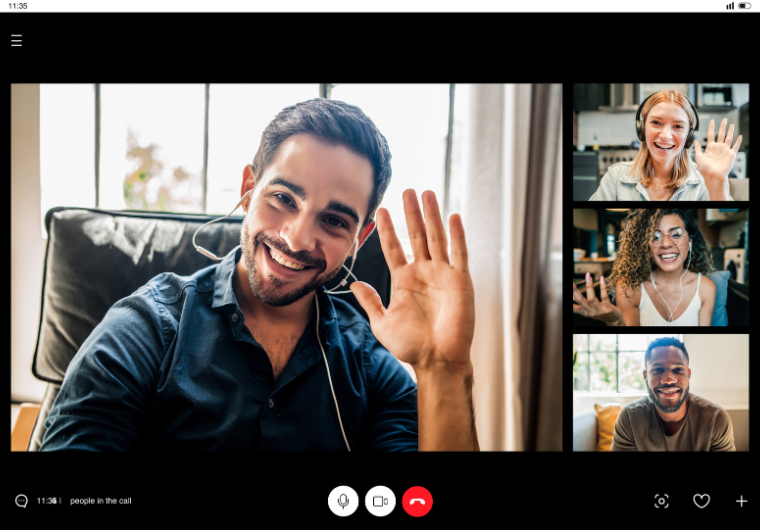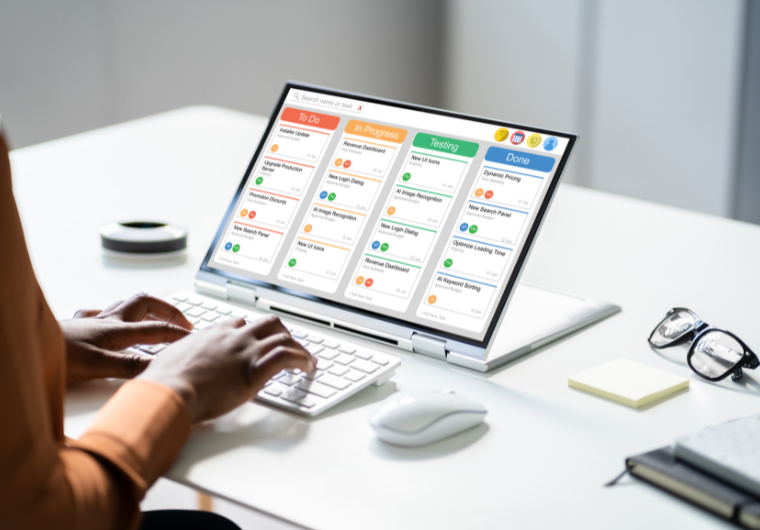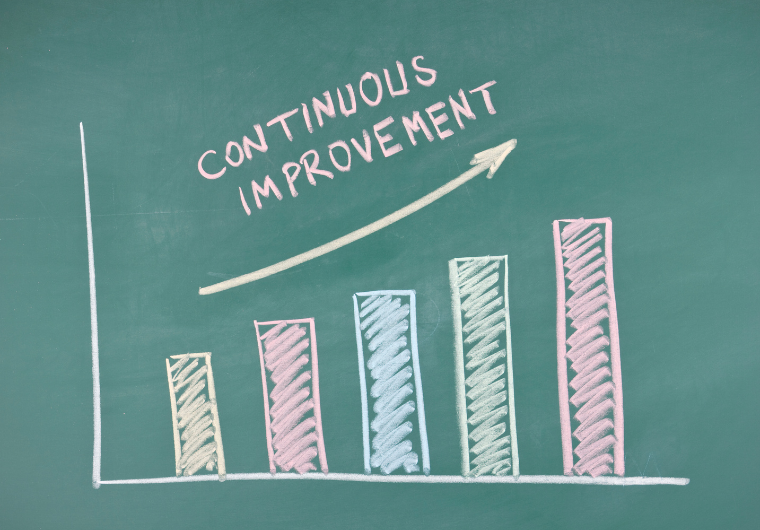While remote work has long been a trend, it’s only now that the necessity of leadership is more apparent than ever. It takes an experienced remote team manager to get this right – guiding and motivating a disconnected workforce requires special skills, tools, and approaches. Remote leadership development is crucial to success and engagement, as it involves mastering virtual communication, ensuring team availability, nurturing emotional intelligence in leaders and promoting a work-life balance. Instead, this blog is going to focus on tangible suggestions and strategies that will make YOU a better remote leader – allowing you to effectively manage your own team as well as get take-aways for growth of any kind in the future within your remote career.
1. Be a Better Remote Leader
Virtual Communication Skills:
- Async Communication Tools:
- These are the channels in which the team update does not require real-time responses. Examples include Slack, Microsoft Teams, and email.
- Tips:
- Record video messages for descriptions that are too complicated to write. That way, it brings about great clarity without a lot of nit-picky real-time discussion. The tool of choice to record such video or audio is Feedspace.
- Tactics:
- Regular update meetings need to be scheduled in order to keep everyone on course.
- Implement “no meeting” days to encourage deep work and reduce meeting fatigue.
- Tips:
- Detailed Instructions:
- When giving a task state it in a way that the other person can understand what is required of them so as to avoid a lot of back and forth conversations that use a lot of time.
- Tips:
- Give common job task templates.
- Give examples and references about what is expected.
- Tactics:
- Further breakdown tasks to small steps with clearly stated deadlines for their accomplishment.
- Tools like Trello offer a more visual way of following the progress.
- Tips:
- Availability:
- Ensure that there is adequate time needed by the tools like the calendar system; set availability to manage expectations.
- Tips:
- Availability management using tools like Calendly to have all team members get access to available time
- Clear office hours and clearly defined boundaries for personal time off
- Tactics:
- Rotate availability among team leads to hit different time zones.
- Rotate availability among team leads to hit different time zones.
- Tips:
- Meaningful Virtual Meetings :
- Have a structured agenda; set a specific goal for each meeting. Schedule the time accordingly and make it short. This way, they stay active and engaged.
- Tactics:
- Restrict meeting time up to 30 minutes to provide more focused discussion
- Follow-up in writing with summaries and action items
- Tactics:
- 1:1 Set-up:
- Meetings between two people at a time to discuss specific issues and personal support.
- Tips:
- Craft a plan based on the prearranged agenda
- Keep your eyes on personal development and career growth.
- Tips:

Emotional Intelligence:
- Self-awareness:
- Spend some time in mind-wandering such that you come to appreciate your emotions and how they affect your leading role.
- Tips:
- Get colleagues’ or mentors’ feedbacks that are helpful for advancing your skills.
- Get colleagues’ or mentors’ feedbacks that are helpful for advancing your skills.
- Tips:
- Empathy:
- Listen emphatically and genuinely worry about the team’s wellbeing, both inside and outside of work.
- Tips:
- Demonstrate that you understand and value the efforts done by your group members.
- Tactics:
- Empathy mapping: Understand their perspective as well as team members’ feelings.
- Supportive environment: Understand their difficulties faced by the team members in their personal lives.
- Tips:
- Self-motivation:
- Put up positive thoughts by sharing motivational quotes or success stories
- Tips:
- Work out some personal milestones
- Boost motivation through marking small victories
- Tactics:
- Create a culture of continuous learning.
- Create a culture of continuous learning.
- Tips:
- Self-Regulation:
- Practice stress management techniques like deep breathing, taking a short walk Tips: Take ample time before responding to stressful situations.
- Tips:
- Adopt conflict resolution techniques to resolve disputes and difference of opinions amicably.
- Prepare a personal action program plan to handle the situations of your emotional triggers.
- Tips:
- Social Skills:
- Conduct team building events and try maintaining open communication with his team members.
- Tips:
- Open communication and active listening
- Tactics:
- Using team collaboration software that is available under collaborative tools.
- Appreciate diversity of inputs and diversity of ideas.
- Tips:

Attentiveness:
- Work-Life Balance:
- Encourage flexible work hours and don’t promote emailing after the office hours are over.
- Tactics:
- Time Doctor and other such tools will help in monitoring work hours so that there is no burnout.
- Work-life balance policies should be initiated and put in place.
- Tactics:
- Mental Health:
- Access to mental health resources. Develop a culture of time out.
- Tips:
- Make the workplace not taboo for discussing mental health.
- Tactics:
- Continue checking up on the well-being of your team members.
- Devebeing stress relief programs and activities.
- Tips:
Flexibility:
- Working Styles:
- Conduct personality surveys to find out what your employees like and adapt your management style for this purpose.
- Tips:
- Allow team members to determine their own work settings.
- Tactics:
- Give people flexible time arrangements which can be helpful to colleagues experiencing different zones day or night.
- Give people flexible time arrangements which can be helpful to colleagues experiencing different zones day or night.
- Tips:
- Autonomy:
- Empower your team; give them tasks with responsibilities and step back to let them handle the tasks.
- Tips:
- Back off – don’t breathe down a neck, just see results, not means.
- Tactics:
- Set targets clearly but keep open how they are reached. Stimulate creative solutions, empower the individual.
- Set targets clearly but keep open how they are reached. Stimulate creative solutions, empower the individual.
- Tips:
2. Prove You Can Manage Remote Teams

Goal Alignment:
- Company Mission:
- Tactics:
- Create Vision Boards to visibly connect and support to bolt your mission in
- Infuse the mission of the house at performance reviews
- Tactics:
- Objective Tracking:
- OKRs (Objectives and Key Results) setting and measurement
- Tips:
- Regularly review and adjust trajectory for objectives
- Tactics:
- Tracking tools such Asana or Jira alongside visibility
- Regular check-ins, weekly, bi-monthly, etc to monitor and pass ideas across
- Tips:
Tech Stack:
- Project Management:
- Tools Trello, Asana, or Jira to Monitor progress or project management
- Tactics:
- Use Gantt charts to visualize project timelines.
- Use Kanban boards to track and prioritize tasks.
- Tactics:
- Team Messaging:
- Slack or Microsoft Teams to quickly shoot a message.
- Tips:
- Create channels for running projects and teams.
- Tactics:
- Lay down how the flow of communication will be to ensure crystal-clear transmissions.
- Implement bots and integrations to automate repetitive actions.
- Tips:
- Video conferencing:
- Use either Zoom or Google Meet for any virtual meetings.
- Tips:
- Ensure that your lighting is good and the audio is clear for effective communication.
- Tactics:
- Record the meeting so that people who might not be able to make it then have something to fall back on.
- Record the meeting so that people who might not be able to make it then have something to fall back on.
- Tips:
- Shared Workspaces:
- Google Workspace or Microsoft 365 for group work.
- Tips:
- Document versioning should be in place so that mistakes do not happen.
- Tactics:
- Set up shared folders and file them in a logical structure.
- Leverage workflow collaboration tools supporting real-time editing and feedback.
- Tips:

Team Building:
- Virtual Activities:
- Organize online games, virtual coffee, or challenges
- Tips:
- Keep e-team building inclusive in nature where all are involved.
- Tactics:
- Use applications – Zoom and Gather – where teams can get together virtually
- Organize team-building activity regularly so that engagement levels stay high.
- Tips:
- Informal Chat Channels:
- Open channels for social conversation and sharing
- Tips:
- Urging team members to share their hobbies and interests
- Tactics:
- Set up informal chat channels on Slack or Teams.
- Engage in conversations to show by example and encourage.
- Tips:

Professional Development:
- Continuous Learning:
- Deliver online courses, webinars, and training workshops.
- Tips:
- Encourage self-directed learning and skill development.
- Tactics:
- Access must be provided to the readymade subscriptions of the online learning platforms such as Coursera or Udemy.
- Conduct regular knowledge-sharing sessions within the team.
- Tips:
- Career Growth:
- Encourage setting up personal growth development goals by team members and mentor them.
- Tips:
- Offer the opportunity for mentorship and coaching.
- Tactics:
- Establish a career development program with defined steps.
- Follow up on development plans regularly and update them on an employee’s progress.
- Tips:
Recognition:
- Celebrate Achievements:
- Publicize successes and issue congratulations.
- Tips:
- Email a pat on the pack or a card
- Tactics:
- Follow up, create a program of recognition and rewards.
- Plan peer-to-peer recognition using tools like Bonusly or Kudos.
- Tips:
- Regular Appreciation:
- Regular Recognition Plan it into the regular meetings and reviews.
- Tips:
- Ensure that mention is made of the minor and not merely the major military successes.
- Tactics:
- Create a “wins” channel to celebrate daily wins.
- Provide shout-outs and spot rewards for immediate recognition.
- Tips:
3. Chart Your Path for Remote Career Growth

Continuous Learning:
- Remote Leadership Training:
- Enroll in online courses on Coursera, Udemy, or LinkedIn Learning platforms that deal with remote management.
- Tips:
- Attend additional learning requirements, such as webinars and online conferences.
- Tactics:
- Seek out professional colleagues to share ideas and principles with in your field.
- Seek out professional colleagues to share ideas and principles with in your field.
- Tips:
- Mentorship Opportunities:
- Find mentors from within your community or associations that continually share their advice and insights.
- Tips:
- Willing to coach others as a way of developing leadership competences.
- Tactics:
- Joining groups and forums on subjects surrounding your industry
- Discover places like MentorCruise where you will be able to find and connect with mentors.
- Tips:
Career Growth:
- Consistent Results:
- Show how the team has achieved success and my part in it by reports and presentations.
- Tips:
- Sharpen your management skills by revisiting regularly.
- Tactics:
- Create detailed reports that incorporate key achievements;
- Expose the case studies and success stories to stakeholders.
- Tips:
Seize the Opportunity:
- Network in the industry and find professionals who can help you look for careers that truly resonate with what you want to do.
With these tools at hand, the remote team manager can effectively lead a team to keep working while staying engaged and, thereby, develop their career within a remote work setup.
Feel free to give your feedbacks and suggestions in the comments section.
Follow RemoteOS for updates on interesting articles!
Keep exploring and innovating!!


Leave a Reply